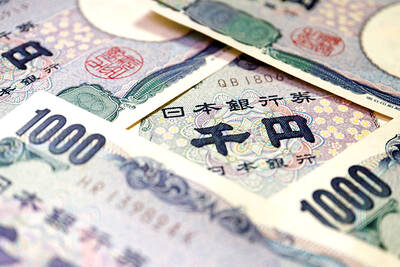Most commodity markets stabilized this week after two weeks of choppy trade, but crude oil sank further after the International Energy Agency (IEA) warned that high price levels could endanger global economic growth.
“After tumultuous price moves through the first two weeks of May, commodity prices have stabilized and in certain cases posted a rebound, but the pace of the recovery has been mixed,” Barclays Capital analyst Sudakshina Unnikrishnan said.
OIL: Crude futures fell after the IEA called for increased oil output to tackle the problem of high prices.
The IEA said that despite a recent 10-percent drop, oil prices remained high because of strong demand and geopolitical uncertainty — a reference to unrest in North Africa and the Middle East.
New York oil prices had surged above US$100 a barrel on Wednesday, lifted by a weak dollar and an unexpected stabilization in US crude stockpiles.
Prices rallied after the US government’s Department of Energy announced that US crude stockpiles had failed to rise as expected in the week to May 13.
Traders were still monitoring the political situation in the Middle East and North Africa, where uprisings have already toppled the leaders of Tunisia and Egypt and unrest has spread to other parts of the oil-producing region.
By late on Friday on London’s Intercontinental Exchange, Brent North Sea crude for delivery in July had fallen to US$110.92 a barrel from US$112.85 for the June contract the previous week.
On the New York Mercantile Exchange, West Texas Intermediate (WTI) or light sweet crude for June stood at US$97.41 a barrel compared with US$98.81.
PRECIOUS METALS: Gold, silver and platinum drifted lower, but palladium won ground.
“The precious metals mirrored the mixed mood, taking direction from currencies,” Fast Markets analyst James Moore said.
Gold, fresh from striking record highs at the start of this month, will enjoy buoyant demand this year, particularly from China and India, the World Gold Council said in a report on Thursday.
Gold struck a record US$1,577.57 per ounce on May 2, as the safe---haven precious metal was lifted by a weak US dollar, low US interest rates and concerns over high inflation.
However, the metal has since tailed off slightly, amid a wider commodities sell-off.
By late on Friday on the London Bullion Market, gold fell to US$1,491 an ounce from US$1,506 the previous week.
Silver dipped to US$34.80 an ounce from US$36.20.
On the London Platinum and Palladium Market, platinum eased to US$1,767 an ounce from US$1,774.
Palladium edged upwards to US$734 an ounce from US$718.
BASE METALS: Industrial metals traded mixed amid jitters over the dollar, the eurozone debt crisis and the faltering global economy.
“Fears of further dollar strength, the debt crisis in the eurozone and slowing global growth momentum, as central banks tighten monetary policy to curb rising inflation, should keep the rallies in check,” analyst Robin Bhar at Credit Agricole CIB said.
By late on Friday on the London Metal Exchange (LME), copper for delivery in three months rallied to US$9,040 a tonne from US$8,825 the previous week.
Three-month aluminum saw drop to US$2,526.75 a tonne from US$2,600.
Three-month lead rose to US$2,486 a tonne from US$2,325.
Three-month tin slipped to US$28,175 a tonne from US$29,100.
Three-month zinc rose to US$2,169 a tonne from US$2,168.
Three-month nickel decreased to US$23,485 a tonne from US$24,600.

AI TALENT: No financial details were released about the deal, in which top Groq executives, including its CEO, would join Nvidia to help advance the technology Nvidia Corp has agreed to a licensing deal with artificial intelligence (AI) start-up Groq, furthering its investments in companies connected to the AI boom and gaining the right to add a new type of technology to its products. The world’s largest publicly traded company has paid for the right to use Groq’s technology and is to integrate its chip design into future products. Some of the start-up’s executives are leaving to join Nvidia to help with that effort, the companies said. Groq would continue as an independent company with a new chief executive, it said on Wednesday in a post on its Web

RESPONSE: The Japanese Ministry of Finance might have to intervene in the currency markets should the yen keep weakening toward the 160 level against the US dollar Japan’s chief currency official yesterday sent a warning on recent foreign exchange moves, after the yen weakened against the US dollar following Friday last week’s Bank of Japan (BOJ) decision. “We’re seeing one-directional, sudden moves especially after last week’s monetary policy meeting, so I’m deeply concerned,” Japanese Vice Finance Minister for International Affairs Atsushi Mimura told reporters. “We’d like to take appropriate responses against excessive moves.” The central bank on Friday raised its benchmark interest rate to the highest in 30 years, but Bank of Japan Governor Kazuo Ueda chose to keep his options open rather than bolster the yen,

Even as the US is embarked on a bitter rivalry with China over the deployment of artificial intelligence (AI), Chinese technology is quietly making inroads into the US market. Despite considerable geopolitical tensions, Chinese open-source AI models are winning over a growing number of programmers and companies in the US. These are different from the closed generative AI models that have become household names — ChatGPT-maker OpenAI or Google’s Gemini — whose inner workings are fiercely protected. In contrast, “open” models offered by many Chinese rivals, from Alibaba (阿里巴巴) to DeepSeek (深度求索), allow programmers to customize parts of the software to suit their

Global server shipments are expected to surge to 15 million units next year, from 4 million units this year, with artificial intelligence (AI) servers accounting for about 30 percent, driven by massive capital spending by major cloud service providers, the Market Intelligence and Consulting Institute (MIC) said on Thursday last week. Major cloud service providers — including Google’s parent company Alphabet Inc, Microsoft Corp, Amazon.com Inc and Meta Platforms Inc — are projected to budget US$450 million for capital expenditure next year, up from US$400 million this year, MIC ICT [information and communications technology] Industry Research Center director Edward Lin